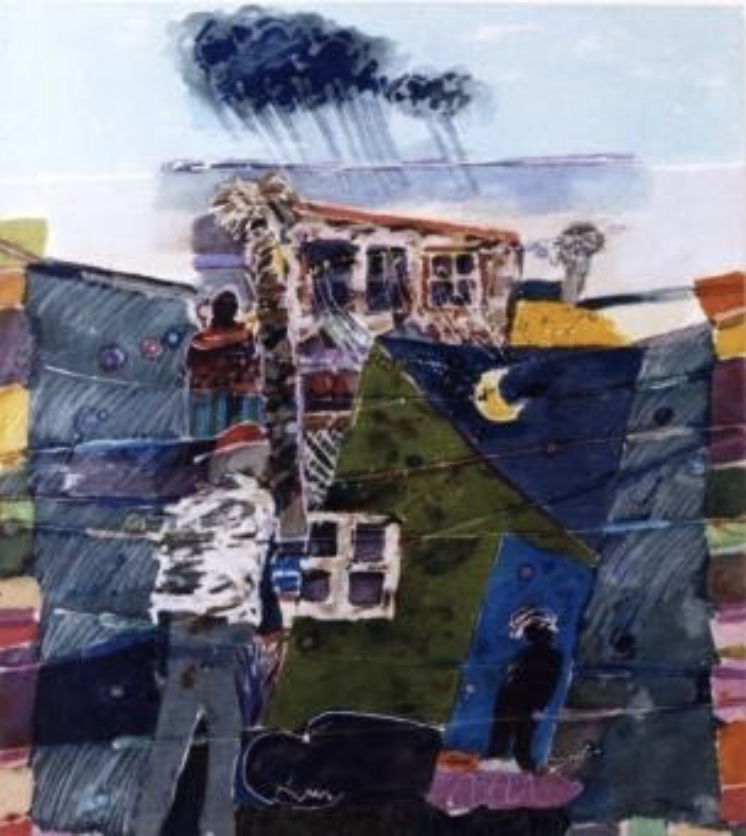In a time when our world is delivering unpredictable, difficult, and seemingly endless challenges, a reflection on resilience may be the very best use of our time. Leo Twiggs’ exhibit at the Franklin G. Burroughs-Simeon B. Chapin Art Museum is a collection of batik works conveying images of endurance in the face of both natural and human-created adversities. The pieces, which span more than 50 years of this revolutionary, prolific artist’s career, derive from a range of series including “Mother Emanuel,” “Hurricane,” “Targeted Man,” “Commemoration – Revisited” and “We Have Known Rivers.”
Leo Twiggs’ Resilience opens Tuesday, June 1, and runs through Saturday, August 28. Museum hours are Tuesday through Saturday from 10 a.m. until 4 p.m.
“Leo’s work is timeless and timely,” said Liz Miller, curator of the Art Museum. “Almost every series represents some sort of obstacle, whether that be segregation, a natural disaster, racism, or a mass shooting. And yet, the artist finds a way to present hope, beauty, and, sometimes, an alternative perspective that speaks to this idea of resilience for which the exhibition is named.” An iconic figure in South Carolina visual arts history, Twiggs’ award-winning career has been comprised of a series of “firsts.” After attending Claflin University in Orangeburg, South Carolina and earning a MA at New York University, Twiggs became the first African American student to receive a doctorate of arts in art education from the University of Georgia, in 1970. Two years later, he became the first African American artist invited to exhibit in the Hampton III Gallery in Taylors, South Carolia., the oldest gallery in the state. His work remains on permanent exhibition in the gallery, reflecting a 50-year relationship with owner Sandy Rupp. Twiggs was also the first African American member of the Board of the South Carolina State Museum Commission; and developer of the first art program at the I.P Stanback Museum and Planetarium at South Carolina State University. In 1981, Twiggs received the Elizabeth O’Neill Verner Award (the South Carolina Governor’s Award for the Fine Arts), and in 2020, he was inducted into the South Carolina Hall of Fame, in Myrtle Beach.
Twiggs has also been dubbed a pioneer of painting with dyes. His batik work takes the craft of dye work and transforms it into fine art, as he uses dye and wax as materials to create paintings. Twiggs discovered batik as a craft during his study at the Art Institute of Chicago, and brought the concept back to the high school where he taught in the 1960s. He experimented with the materials and the technique until he was creating pieces unlike anything the art world had seen.
“Batik, when I selected it, became my voice,” said Twiggs. “I found I could say things with batik that I couldn’t say with paint.” Twiggs’ technique gives his works a weathered, layered look that can’t be replicated in other media, and that impression reinforces the message of the piece. “When you look at a painting, you stand back to see it all,” said Twiggs. “With batik, the closer you get to the piece, the more you see.”
Twiggs has witnessed personally the effect this quality has on viewers of his work. “At first, the viewer will see a child on a beach, or an old woman sitting in a chair,” said Twiggs. “But when they look closer, they’ll see the isolation, or the defiance in the person’s demeanor. They’ll see things they didn’t see before. That’s because I don’t just paint people or scenes. My paintings are about ideas, and the role of an artist is to help you see things you don’t see.”
Miller said the exhibit is particularly fitting for local audiences. “I think everyone can relate to overcoming obstacles, and the fact that many of these trials – segregated beaches, Hurricane Hugo, Confederate flags on display and the Mother Emmanuel AME Church shooting in Charleston – are specific to our home state will resonate even more with our fellow South Carolina visitors.”
Miller concurs with Twigg’s sentiment that having an impact on a viewer’s vision is a primary goal of art work, and she believes Twigg will succeed with Art Museum visitors. “I hope viewers’ eyes are opened or widened to a new sense of awareness about the experiences of others, our neighbors, and fellow community members. Or, perhaps visitors will identify with the experiences presented in Leo’s work. Either way, I hope people are able to walk away with a fresh perspective and the inspiration to spread hope and kindness in lieu of hate and divisiveness.”
Leo Twiggs | Resilience is sponsored by Bank of America.
Admission to the Art Museum is free; donations are welcomed.

